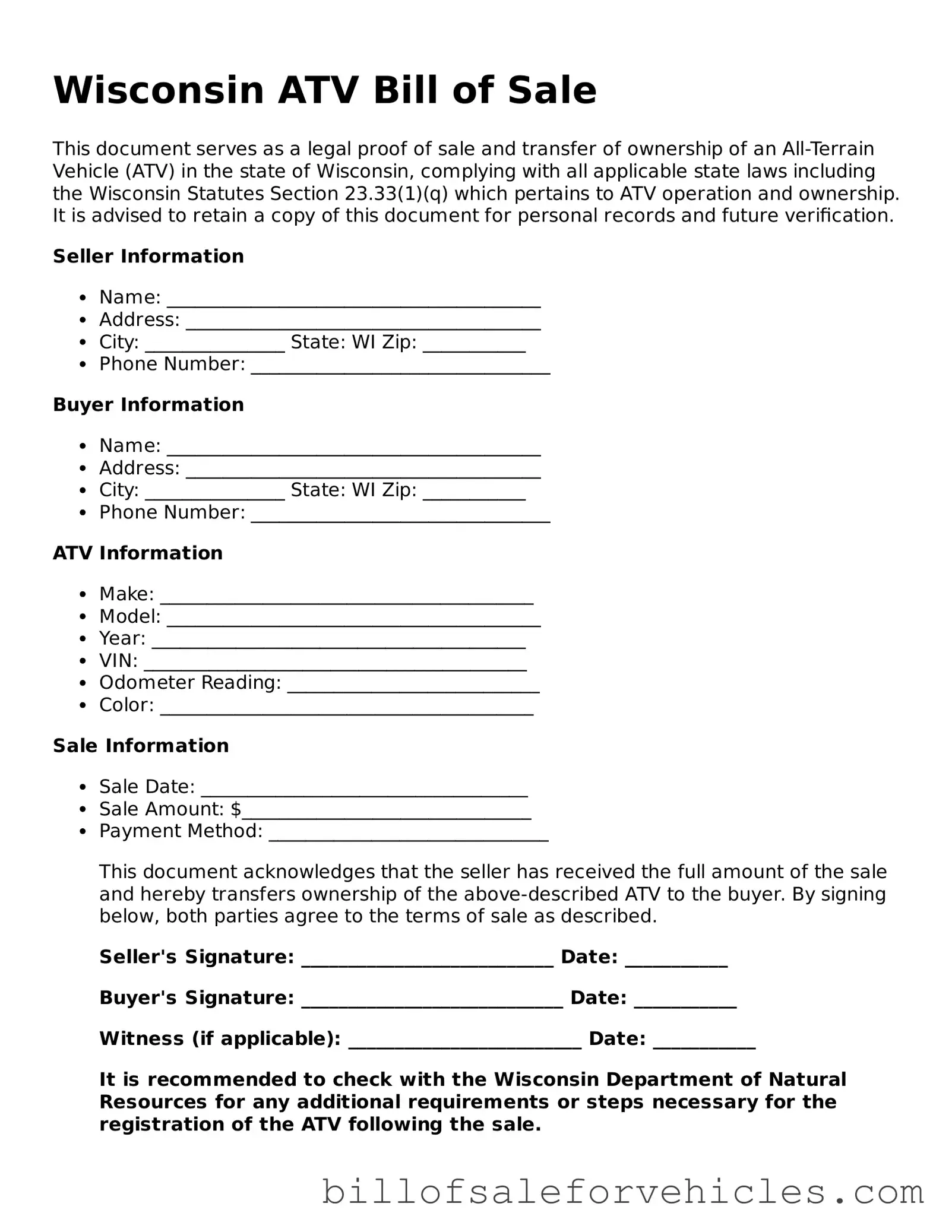What is a Wisconsin ATV Bill of Sale form?
A Wisconsin ATV Bill of Sale form is a document that proves the legal sale and purchase of an All-Terrain Vehicle (ATV) between two parties in the state of Wisconsin. It includes details such as the purchase price, date of sale, and information about both the buyer and the seller, along with specifics about the ATV, like its make, model, year, and vehicle identification number (VIN).
Do I need a Wisconsin ATV Bill of Sale to register my ATV?
Yes, you generally need a Wisconsin ATV Bill of Sale to register your ATV. The Wisconsin Department of Natural Resources (DNR) requires proof of purchase when registering an ATV. This document serves as a key piece of evidence for the transaction and ownership transfer.
Can I write my own ATV Bill of Sale for use in Wisconsin?
Yes, you can write your own ATV Bill of Sale for use in Wisconsin. The document should contain all necessary details: the buyer's and seller's names and addresses, the sale date, the purchase price, and a thorough description of the ATV. It is recommended to get it notarized, even though it's not a legal requirement, to add an extra layer of authenticity.
What information should be included in the ATV Bill of Sale?
The ATV Bill of Sale should include the full names and addresses of both the buyer and seller, the date of sale, the sale price, and detailed ATV information (make, model, year, VIN). Including an odometer reading and a statement confirming the accuracy of the information provided by both parties is also beneficial.
Is a witness required for a Wisconsin ATV Bill of Sale?
While not strictly required, having a witness or getting the document notarized when signing the Wisconsin ATV Bill of Sale adds credibility to the document and can help protect both parties in case of disputes.
Does the Wisconsin ATV Bill of Sale need to be notarized?
Notarization of the Wisconsin ATV Bill of Sale is not a legal requirement, but it is a good practice. Notarization can prevent potential legal issues by verifying the identity of the signatories and ensuring that the document's signatures are genuine.
What happens if I lose my Wisconsin ATV Bill of Sale?
If you lose your Wisconsin ATV Bill of Sale, it's important to ask the seller for a duplicate, if possible. If a duplicate cannot be obtained, gather any other purchase evidence, like bank statements or emails regarding the transaction, and contact the Wisconsin DNR for guidance on alternative forms of proof that might be acceptable for registration or title purposes.
Can an ATV Bill of Sale be used for tax purposes?
Yes, an ATV Bill of Sale can be used for tax purposes. It serves as a receipt for the purchase and can be used to document the price paid for the ATV, which is necessary for sales tax calculation and for personal property tax records, if applicable.
Who is responsible for completing the Wisconsin ATV Bill of Sale?
Both the buyer and the seller are responsible for ensuring that the Wisconsin ATV Bill of Sale is accurately completed. Both parties should verify the information, ensure all relevant sections are filled out, and retain copies of the signed document for their records.
